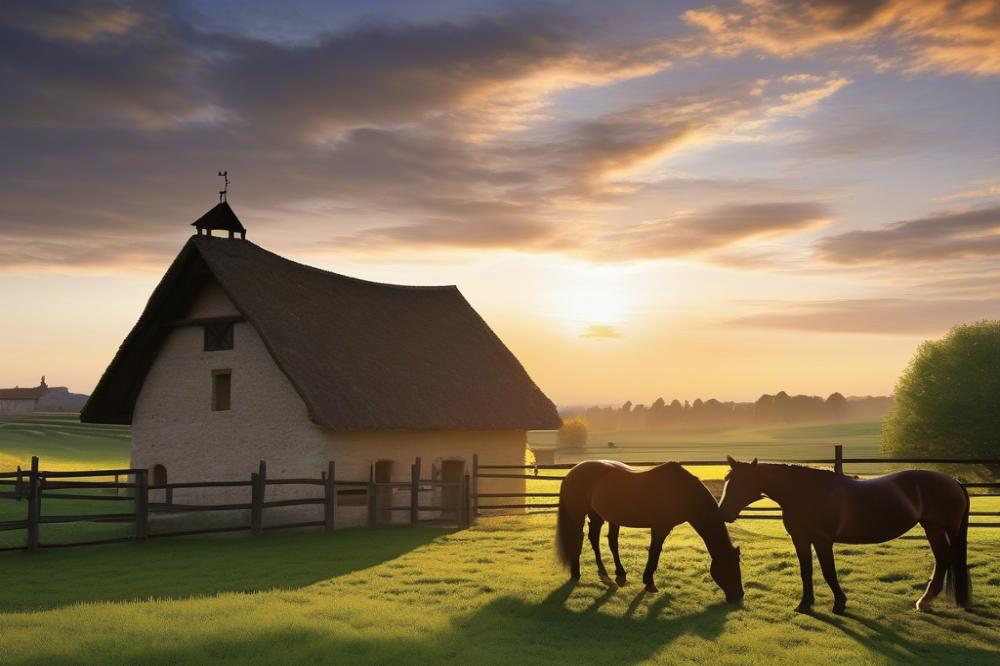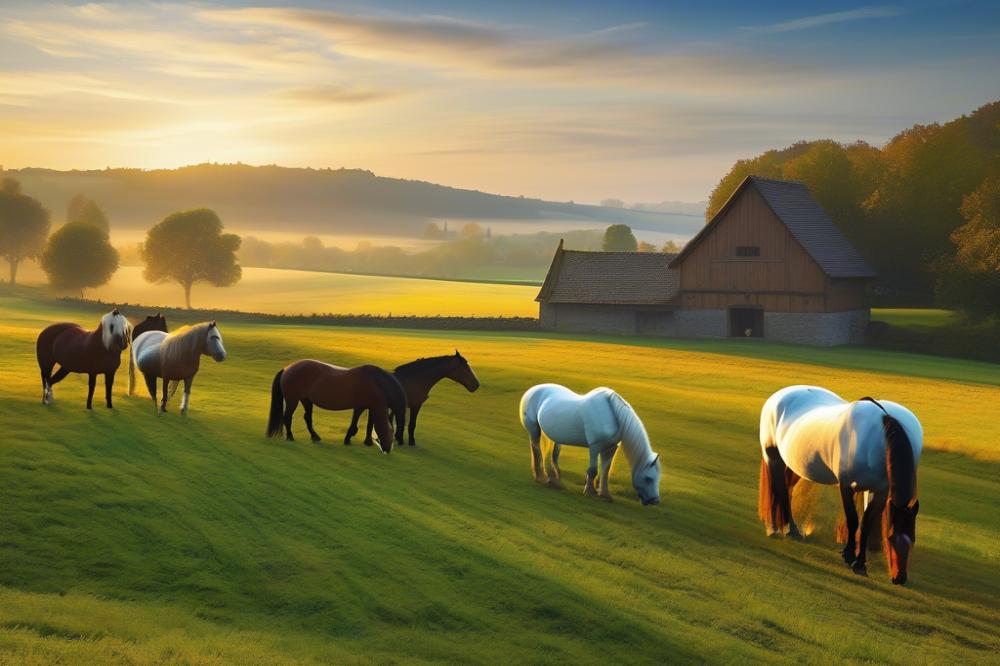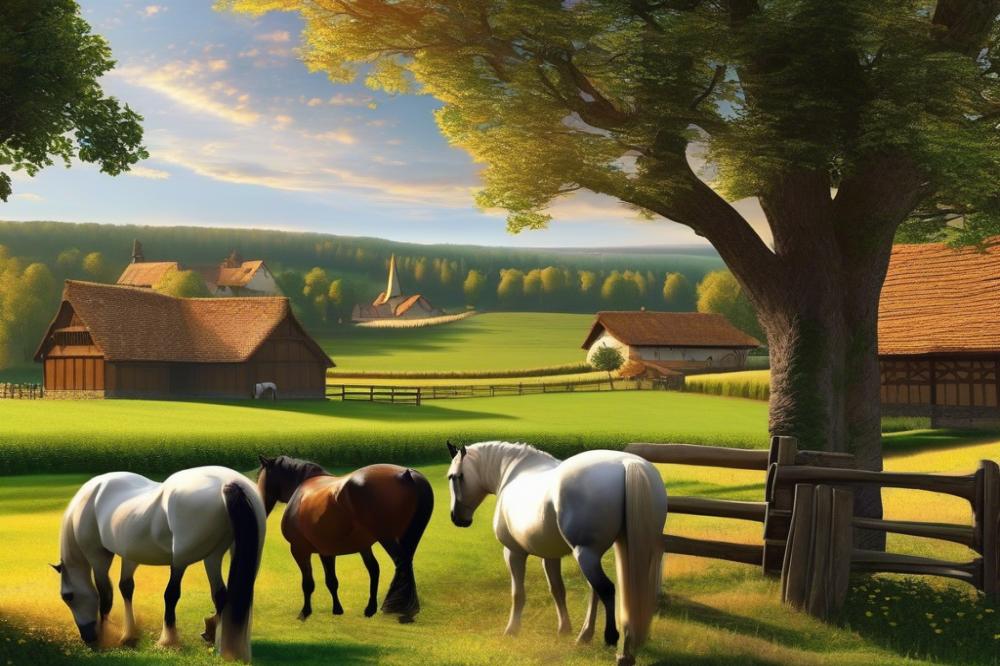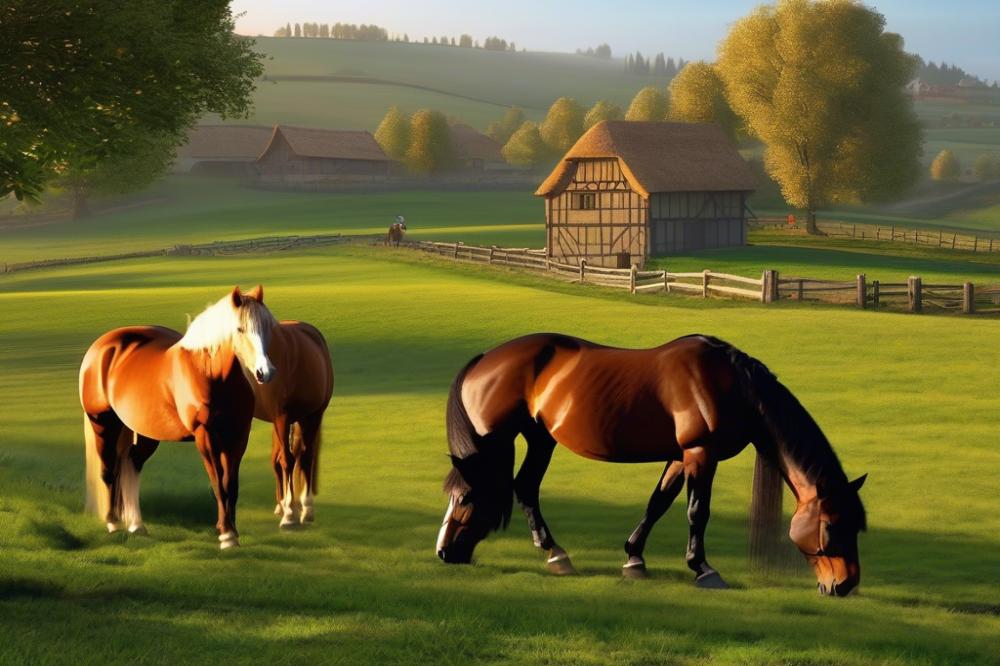Introduction
During the medieval period, Horses played a vital role in the fabric of daily life across Europe. These animals were not only companions but also essential tools in various tasks on farms. They enabled farmers to cultivate the land, transport goods, and carry out many chores that would have been nearly impossible for humans alone.
Agrarian society in this era heavily relied on efficient methods to grow crops and manage livestock. The use of these powerful creatures transformed farming practices. The strength and endurance of Horses supported increased productivity. As a result, many communities thrived as agricultural outputs improved. Understanding their significance offers insight into how Medieval Agriculture evolved over the centuries.
This article aims to explore the multifaceted roles of horses in traditional farming practices during this dynamic time. Topics will include the specifics of their applications, the impact they had on productivity, and how they shaped rural life. Readers will gain a comprehensive understanding of why these animals were so crucial to medieval communities.
Horses and Traditional Agricultural Practices

Role of horses in farming tools and techniques
Farmers relied on horses to operate many farming tools. The presence of these animals transformed agricultural practices in medieval Europe. Plows, once pulled by oxen, saw a shift in design and use. Lighter plows, made for speed and agility, became common. Farmers discovered that horses could navigate fields more easily than larger animals. This change made it simpler to till the soil.
Impact on plowing methods and efficiency
Plowing became more efficient through the use of these strong yet nimble creatures. Fields required less time to prepare, which meant more time for other tasks. With an increase in plowing speed, crop rotation improved. Farmers gained the ability to plant multiple crops within a season. This level of efficiency allowed them to maximize their yields. Better plowing made a significant impact on overall productivity.
Contribution to crop cultivation
The cultivation of crops benefited greatly from this new method of farming. Fields could be plowed deeper, promoting healthier soil. Higher yields of grain and vegetables led to better food supplies for communities. Harvests improved across various regions, which is vital for population growth. Farmers began to experiment with different crops due to newfound agility in farming. This exploration sparked an interest in diverse agricultural practices.
Equine Roles in Transportation

The use of strong animals for transporting goods was essential in medieval Europe. Merchants relied heavily on these animals to carry heavy loads across towns and villages. The ability to move merchandise efficiently connected different regions. Without this method of transport, trade would have faced significant challenges and delays.
Trade flourished thanks to animals helping merchants reach far-off markets. Goods such as grain, textiles, and pottery traveled long distances, making markets lively hubs of activity. Local economies depended on this exchange of products to sustain growth. In addition to moving items, transporting people created links between communities.
Markets often had diverse offerings, but without efficient transport, many businesses would not thrive. Farmers could sell their crops elsewhere, while artisans spread their crafts. The economy of the time hinged on the ability to transfer goods quickly from one place to another. Thus, the transportation network developed around these animals became a backbone of medieval society.
The influence on local economies was profound. Many towns grew due to their strategic locations along trade routes. The steady flow of goods brought wealth to merchants and, indirectly, to local workers. As more people gathered in markets, communication and cultural exchange also increased.
While some areas saw a boom in population, others struggled to adapt. Not all regions had equal access to trade networks. Those with reliable transport systems enjoyed more prosperity compared to those that lacked such infrastructure. Inevitably, this disparity shaped the social and economic landscapes of the time, underlining the vital role of animals in the medieval world.
Horses in Livestock Management

Utilization of horses in herding and managing livestock was crucial in medieval times. They played a vital role on farms and helped farmers keep track of their animals. With the ability to cover large areas quickly, these animals made herding more efficient. Gatherings of sheep or cattle became easier under the guidance of a strong mount. Their endurance was unmatched when chasing livestock over rugged terrain.
A strong connection existed between these animals and overall farm productivity. Farms that effectively integrated horses often saw improvements in efficiency and output. When livestock were well-managed, the yields of meat, milk, and wool flourished. Productivity increased not only from better herd management but also from the energy provided by the animals themselves. Farmers could cultivate fields, pull heavy loads, and transport goods over greater distances.
Sustainable practices involving horses became commonplace. Owners relied on their energy for tasks that would otherwise require more manpower. This approach minimized reliance on external resources, making it easier to maintain a self-sustaining farm. Utilizing horses in daily activities promoted a balanced ecosystem. This relationship between farmer and animal allowed for better land stewardship, which benefited future generations.
cultural significance of horses

The roles of these animals varied greatly across different cultures in medieval Europe. In some regions, they were seen as symbols of power and nobility. Knights rode steeds into battle, cementing the horse’s importance in warfare. Meanwhile, in rural communities, other equines served practical farming needs. They pulled plows and carried heavy loads, forming the backbone of agricultural life.
Symbolism played a significant role in how society viewed these creatures. A horse represented status and wealth, especially in noble families. Kings often displayed their might through impressive stallions. In contrast, peasants relied on sturdier breeds that were dependable but less glamorous. The contrast highlighted different aspects of life, from luxury to necessity.
Folklore and traditions surrounding these animals enriched cultural narratives. Many stories featured them as magical beings or heroic companions. Tales spoke of horses with extraordinary abilities, captivating the imagination of young and old alike. Specific festivities often celebrated these animals, showcasing local customs and community bonds.
In some places, certain horses became legendary, their names passed down through generations. Festivals dedicated to them included jousting and racing, drawing crowds from far and wide. Such events strengthened community ties while honoring the vital roles these animals played in daily life.
Challenges and Adaptations
Diverse difficulties confronted farmers who depended on equines for their work. Weather played a significant role in this reliance. Wet or dry seasons impacted the ability to plow fields. Poor soil conditions often made it hard for animals to pull heavy loads. These circumstances meant that farming could not always depend on traditional methods.
Several technological advancements emerged during medieval times. New plowing techniques made use of improved tools. The introduction of the heavy plow changed the dynamics of crop cultivation. Nevertheless, animals initially struggled with these innovations. As a result, farmers adapted their strategies to balance efficiency and practicality.
Traditions shifted as new ideas spread through communities. Shared knowledge about animal husbandry enhanced productivity. Farmers learned effective ways to keep their animals healthy and strong. This knowledge meant they could cultivate more land with fewer resources. Improving breeding practices also contributed to better working animals. Understanding their needs helped address some challenges faced in the fields.
Crops benefited from rotations and mixed farming. These methods increased soil fertility and reduced pests. Adapting crop strategies meant that farmers could maximize yields. The use of animals complemented these practices by providing essential labor. Flexibility in agricultural methods became crucial for survival during tough times.
Final Thoughts on the Role of Horses in Medieval Agriculture
Recap of the Significance
In medieval Europe, the role of horses was crucial to agriculture. They helped plow fields, transport goods, and even drive wagons. Farmers depended on them for their daily activities. With strength and endurance, these animals made agricultural life more efficient. Without their help, many tasks would have been much harder. This reliance on such animals shaped the very foundation of rural life during those times.
Legacy in Modern Farming
Today, the impact of these ancient practices can still be felt in farming. Many modern agricultural techniques have roots in their traditional practices. While tractors and machinery have taken over many tasks, some farms still use horses for specific roles. People appreciate their gentleness and connection to the land. This legacy reminds us of an era when humans and animals worked closely together.
Cultural Importance
Additionally, horses hold a deep cultural significance that goes beyond agriculture. They symbolize strength and partnership in many societies. Folklore, art, and literature often highlight their prominence. The relationship between humans and these animals has evolved but remains strong. Recognizing this historical importance enriches our understanding of medieval life. It provides insight into how traditional methods shaped communities and cultures across Europe.
Embracing the past helps us appreciate the journey that led to our current agricultural practices. As we reflect on this bond, it is clear that the legacy of horses will continue to inspire future generations.



